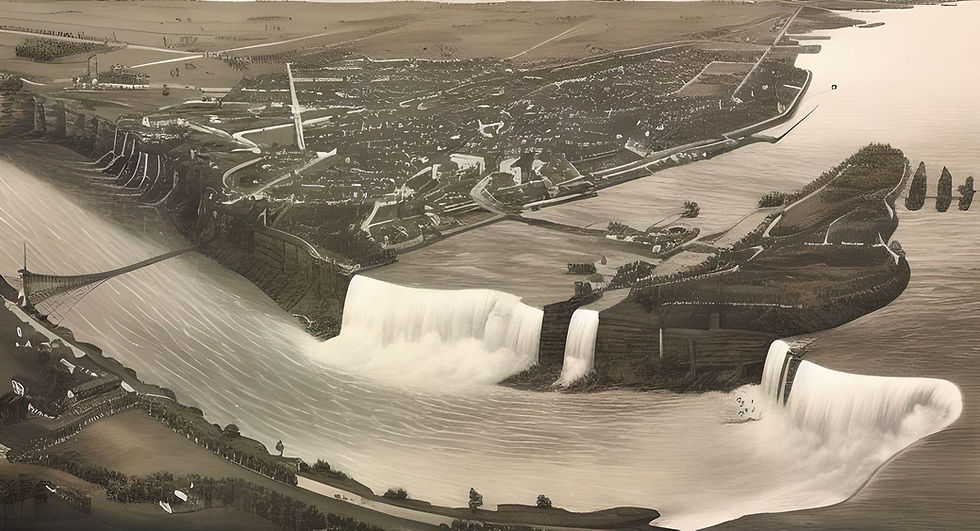Shaping a City, Tourist Destination: The Industrial Revolution's Impact on Niagara Falls
- Niagara Action
- May 25, 2024
- 3 min read

Niagara Falls, renowned for its breathtaking natural beauty, has long been a popular tourist destination. However, it was during the Industrial Revolution that the region experienced significant growth and transformation, forever altering its landscape.
The Industrial Revolution, which began in the late 18th century, brought about significant advancements in technology and manufacturing processes. This period saw the rise of steam power and later, the utilization of hydroelectric power. Niagara Falls, with its immense water flow, became an ideal location for harnessing this renewable energy source. The development of hydroelectric power plants in the late 19th and early 20th centuries revolutionized the industrial landscape of Niagara Falls. The availability of cheap and abundant electricity attracted numerous industries to the region, leading to economic growth and job opportunities.
The availability of hydroelectric power attracted industrial giants to Niagara Falls. Companies such as the Niagara Falls Power Company and the Niagara Falls Hydraulic Power and Manufacturing Company established large-scale manufacturing facilities, including chemical plants, paper mills, and textile factories. These industries not only contributed to the economic prosperity of the region but also shaped its physical landscape.
The influx of industries and the subsequent growth in population led to urbanization in Niagara Falls. Workers and their families migrated to the region in search of employment opportunities. As a result, new neighborhoods and communities were established, transforming the once rural landscape into a bustling industrial city.
As the population grew, so did the demand for recreational activities and entertainment. Entrepreneurs seized this opportunity and began developing tourist attractions to cater to the growing number of visitors. Hotels, amusement parks, and other recreational facilities sprouted up, transforming Niagara Falls into a thriving tourist destination.
Recognizing the need to preserve the natural beauty of the falls amidst rapid industrialization, the state of New York established Niagara Falls State Park in 1885. It was the first state park in the United States, and its creation marked a significant milestone in the conservation movement. The park aimed to protect the falls and provide visitors with access to the awe-inspiring natural wonder.
To accommodate the increasing number of tourists, the Niagara Gorge Belt Line was established in 1895. This electric trolley system provided convenient transportation for visitors, allowing them to explore the scenic beauty of the Niagara Gorge. The trolley line connected various attractions, including the falls, parks, and other points of interest, further enhancing the tourism experience.
The rapid industrialization of Niagara Falls had a profound impact on its physical environment. The construction of power plants and factories altered the natural landscape, leading to the creation of man-made structures and the diversion of waterways. While these changes were necessary for industrial growth, they also transformed the visual appeal of the region.
As the detrimental effects of industrialization on the environment became apparent, conservation efforts gained momentum. Concerns about pollution and the degradation of natural resources prompted stricter regulations and initiatives to protect the falls and surrounding areas. Today, ongoing efforts continue to balance industrial development with environmental preservation.
The Industrial Revolution played a pivotal role in shaping the growth and new landscape of Niagara Falls. The harnessing of hydroelectric power, development of tourist attractions, and establishment of Niagara Falls State Park all contributed to the region's transformation. While industrialization altered the physical environment, efforts to preserve the natural beauty of the falls have ensured that future generations can continue to appreciate this remarkable destination.





